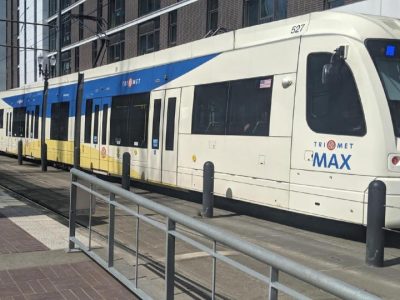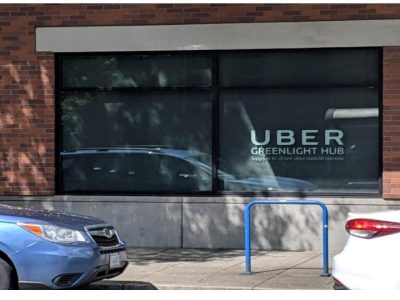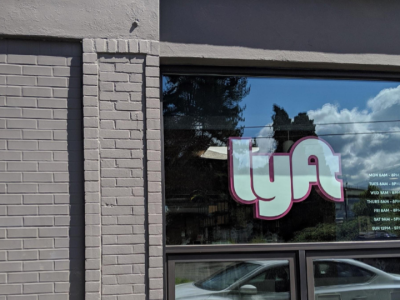| Outbreak: Measles and Ridesharing | |
|---|---|
| Product: Ridesharing as a vehicle for exposure | Investigation Start Date: 08/08/2018 |
| Location: Multi-State & Canada | Etiology: Measles virus (a member of the genus Morbillivirus of the family Paramyxoviridae) |
| Earliest known case onset date: 08/02/2018 | Latest case onset date: 08/18/2018* |
| Confirmed / Presumptive Case Counts: 4 / 0** | Positive Samples (Food / Environmental / Water): 0 / 0 / 0 |
| Hospitalizations: 0 | Deaths: 0 |
* Onset for the one secondary case we investigated (No notes on the other secondary or the tertiary case)
** One other secondary case likely exposed at the ferry and a tertiary case in Canada
Measles Contact Tracing in the Ridesharing Economy — Oregon, 2018
OUTBREAK SUMMARY
This outbreak highlighted a potential new setting for exposure to airborne diseases. Oregon Health Authority (OHA) guidelines define potential measles exposure warranting public-health action as being indoors within 10 meters of a confirmed measles case, during the ill person’s infectious period, within 20 minutes of the infectious person’s having been present. Sharing a car with someone or entering one shortly after they leave during their infectious period might be enough to transmit measles.
Ridesharing companies collect information as a matter of regular business that can be used for tracebacks, identifying who was likely exposed to whom and when that exposure happened. None of the ridesharing contacts developed signs or symptoms of measles during their monitoring period, perhaps due to the high rate of vaccination among contacts. This outbreak identified the importance of proactively establishing relationships with entities like ridesharing companies before outbreaks occur to encourage collaboration during traceback investigations.
DETAILS
- Notification and initial confirmation
- Contact tracing
- Public notification
- Local contact tracing
- Ridesharing
- Obtaining contact information for those potentially exposed through ridesharing was delayed due to ridesharing companies’ lack of familiarity with public-health statutory authority for collection of pertinent information during communicable disease investigations.
- Getting Uber information
- Getting Lyft information
On August 8, 2018, Alaska Public Health was made aware of a 16-year-old female traveler from New Zealand who had been in Oregon for a wedding on August 4. Her signs and symptoms were consistent with measles, but at that time, she had no known exposure to an infected person or an endemic area. They sent samples overnight to the California Department of Public Health’s Viral and Rickettsial Disease Laboratory; her case was confirmed on August 10. It was, of course, a Friday. Great work by partners in Alaska established a timeline of events while the patient was in Oregon. She arrived to Oregon from Thailand on July 30 and departed for Vancouver, British Columbia on August 6; her rash onset was August 2. In addition to the wedding on August 4, she visited a few restaurants, sought care at a walk-in clinic, and went a few other places. To travel around the Portland area, she used public transportation (TriMet) and ridesharing. TriMet provides bus, light rail and commuter rail service in the Portland, Oregon. Local public health authorities traced contacts from exposures in their jurisdictions and an announcement was made through TriMet encouraging riders on the specified routes and times to seek care if they had signs or symptoms consistent with measles.
Using exposure criteria of being indoors within 10 meters of a confirmed measles case, during the ill person’s infectious period, within 20 minutes of the infectious person’s having been present, OHA sought to identify contacts potentially exposed through ridesharing, which would include anyone who drove the patient and any subsequent passenger whose ride started within 20 minutes of the patient’s ride ending. The patient had receipts from ridesharing trips, but they lacked contact information for drivers and had no information about subsequent passengers. OHA epidemiologists met with initial resistance from, ahem, Rideshare Company A when calling the driver support phone number. Asking to speak to legal counsel worked better. They told us there was a local physical office. We hoped by going in person, we could convey the urgency of this unconventional request. People at the local office put us in touch with the company’s law enforcement division, who asked for license plates. The patient’s mother provided this information through receipts in the ridesharing application. The Rideshare Company A provided the information to OHA within 2 hours. We received contact information for all of the drivers and passengers. All told, this was 4 days after the first case was confirmed.
OHA was notified by a local public health authority of a secondary case on August 20; this person attended the same August 4 wedding but spent most of her infectious period in Texas. Upon returning to Oregon on August 20 and seeking care, she consented to self-isolate until the end of her infectious period. Her rash onset was August 18, and her case was laboratory confirmed on August 21.
Results
- Contacts identified
- No ridesharing cases
- 4 total cases
- Started relationship with ridesharing companies? COVID?
Conclusions
Ultimately, none of the 14 persons potentially exposed to measles through ridesharing developed signs or symptoms of measles during their incubation period; all but one of them were fully vaccinated prior to the potential exposure. Establishing data-sharing agreements with ridesharing companies can help public health departments obtain precise exposure times and contact information quickly and easily.
Measles presentation – OIP presentation – first half
Measles presentation – OIP presentation – second half
Measles recording



